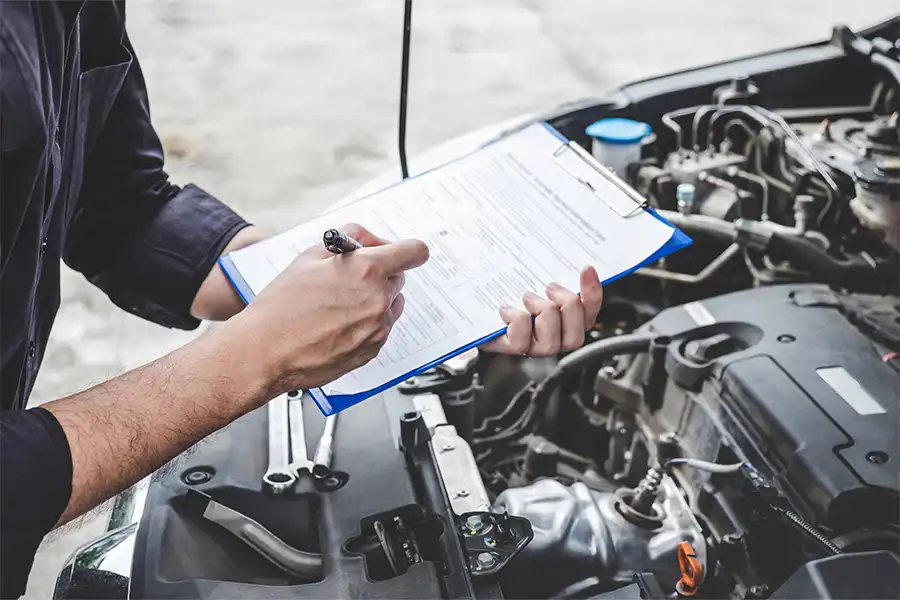1. What a Logbook Service Actually Is
A logbook service follows the service schedule published by your vehicle’s manufacturer (time and/or distance). It specifies the exact checks, adjustments, software updates, and component replacements required at each interval. Crucially, the service is recorded—in a physical logbook and/or digital history—so there’s a clear, auditable trail showing your car has been maintained to factory standards.
Compared with a generic “basic service,” a true logbook service is:
- Prescriptive: It follows the factory checklist for that model, engine, and transmission.
- Evidence-based: It generates documentation (logbook stamp plus itemised invoice) you can rely on later.
- Preventive: It catches issues at the mileage where they statistically appear, rather than waiting for symptoms.
2. Benefits That Go Far Beyond the Warranty
Warranty is a big part of the story, but not the whole story. Done properly, logbook servicing delivers everyday value:
- Reliability: Scheduled inspections surface early wear on brakes, belts, batteries, cooling components, and sensors—so you fix small problems before they become major failures.
- Performance & efficiency: Correct oil grades, calibrated electronics, and clean filters allow the powertrain to work as designed, often improving driveability and fuel economy.
- Safety: Brake fluid moisture tests, tyre condition and pressure checks, suspension and steering assessments, and ADAS/calibration checks all reduce risk.
- Lower lifetime cost: Preventive replacement of inexpensive items (e.g., filters, fluids) avoids downstream damage to expensive systems.
- Resale value & buyer confidence: A complete, clearly stamped service history is one of the first things buyers and dealers look for.
3. How log book servicing Affects Warranty Outcomes
Most manufacturer warranties are conditional. They expect owners to service vehicles on schedule and to the specified standard. Here’s what matters in practice:
- Intervals matter: Missing or significantly delaying a scheduled service can jeopardise warranty coverage for affected components. Set reminders for both time and kilometres.
- Specifications matter: Use parts and fluids that meet manufacturer specifications (e.g., oil viscosity and approvals, coolant type, transmission fluid). Cutting corners can put coverage at risk if a failure is linked to non-compliant maintenance.
- Documentation matters: Keep the logbook stamped and retain itemised invoices noting VIN, odometer, dates, and all parts/fluids used. If a claim arises, your records are evidence that you met the obligations.
- Scope matters: A true logbook service covers all items in that interval—including software updates, inspections, and torque checks—not just oil and a filter.
Bottom line: If the work is completed on time, to spec, and properly documented, you protect both the vehicle and your warranty position.
Book your warranty-safe Logbook Service to keep your car compliant and trouble-free.
4. Common Pitfalls (and How to Avoid Them)
- “Basic” instead of “logbook”: A quick oil change may be fine between intervals, but it’s not a substitute for the manufacturer’s scheduled service with the full checklist.
- Wrong lubricants/fluids: The correct oil grade and approvals (and the correct coolant and transmission fluid) are non-negotiable. “Almost right” can cause premature wear.
- Skipping inspections: Items like brake fluid boiling point, cabin filter (affects HVAC/defogging), and software/TSB checks often get overlooked in cut-down services.
- Poor record-keeping: No stamp, vague invoices, or missing odometer entries weaken your position in disputes. Ask for clear documentation every time.
- Letting intervals slip: Service schedules are based on time as well as distance. Even low-kilometre cars need yearly attention for fluids, rubber components, and corrosion checks.
5. What a Quality Logbook Service Should Include
While specifics vary by make/model and interval, a professional logbook service typically includes:
- Full vehicle health check against the factory list for that interval
- Engine oil and filter replacement to the specified grade/approval
- Inspection of brakes (pads/discs/drums), brake fluid test, and lines
- Steering, suspension, and underbody checks (bushes, joints, leaks)
- Cooling system inspection (hoses, clamps), coolant condition/level
- Air, cabin, and—where applicable—fuel filter checks/replacement
- Tyre condition and pressure adjustment (including spare)
- Battery test and charging system check
- Diagnostic scan for fault codes; software updates where applicable
- Reset of service indicators and update of logbook/service history
6. Choosing the Right Workshop (and Where We Operate)
Pick a workshop that treats your logbook like a legal document and your car like an investment. Look for licensed technicians, transparent quotes, itemised invoices, and a process that clearly maps to the manufacturer schedule. Ask what oil approvals they carry, how they document work, and whether they’ll proactively flag upcoming interval items so you can budget ahead.
Service area, naturally stated: Our team at Elite Brake & Mechanical performs warranty-safe log book servicing and full mechanical care for drivers in our local area—Springvale VIC—and the surrounding suburbs such as Clayton, Mulgrave, Noble Park, Dandenong, and Oakleigh. If you work or live nearby, we’re a convenient, trustworthy option for keeping your service history complete.
Explore inclusions, pricing, and booking options on our Logbook Service page.
7. When Should You Book Your Next Logbook Service?
One of the most common questions drivers ask is: “When is the right time for a logbook service?” The answer is simple — follow the schedule in your manufacturer’s logbook: usually every 12 months or the specified kilometre interval (whichever comes first).
But there are also real-world situations where you shouldn’t wait for the next official due date:
- Warning lights on the dashboard: Even if your next service isn’t due, an illuminated service or engine light is a clear sign to get checked.
- Unusual noises or vibrations: Squealing brakes, rough idling, or fluid leaks should never be ignored.
- Before long trips: A pre-trip logbook service gives you peace of mind on highways or holidays.
- After harsh driving conditions: Stop-start city traffic, heavy towing, or dusty roads can accelerate wear and tear.
Sticking to these intervals doesn’t just protect your warranty — it ensures your car remains safe, efficient, and ready for every journey.
👉 Don’t wait until problems appear. Book your log book service in Springvale VIC today and drive with complete confidence.
Protect Your Warranty — Book Your Next Logbook Service Today
A thorough, by-the-book logbook service is the best way to align your maintenance with how the vehicle was engineered to run. It preserves performance, keeps costs predictable, boosts resale value, and—when documented properly—supports your warranty position. Choose a workshop that follows the schedule, uses the correct parts and fluids, and stamps the logbook with clear evidence of work performed.
Ready to book your logbook service? Keep your car compliant, efficient, and safe—without dealership hassle.



